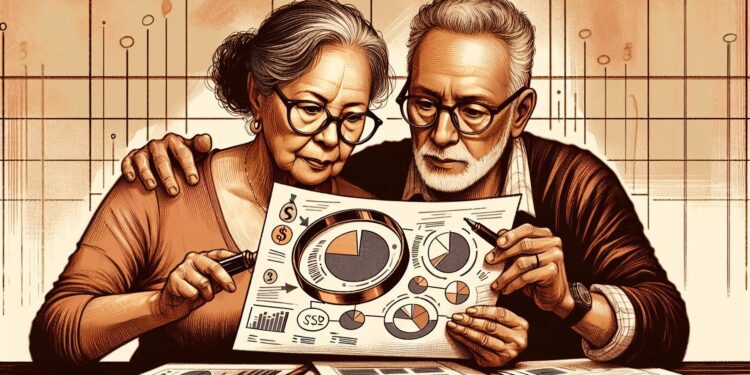By 2024, an estimated 68 million U.S. citizens will rely on Social Security benefits, with 90% of retirees partially dependent on them and 60% viewing them as their primary income source. The Social Security system faces increased strain due to longer life expectancies and a retiring baby-boomer generation, potentially leading to trust fund reserve depletion by 2034 and subsequent benefit reductions.
Aside from retirees, Social Security also provides vital income to disabled individuals and survivors of deceased workers, with around 20% of benefits in 2024 expected to support these groups. However, ensuring the system’s sustainability may necessitate solutions like raising payroll taxes or the retirement age.
Spousal benefits, a lesser-known aspect of Social Security, are significant. These benefits, available to the spouse of a retiree or a worker who is disabled or deceased, can amount to half of the working spouse’s full retirement benefits. Yet, many potential claimants are unaware of the eligibility criteria, limiting their utilization.
The amount received in spousal benefits does not impact the original benefits earned by the spouse who accrued them, meaning one spouse’s claim does not reduce the other’s eligibility. Interestingly, ex-spouses meeting certain criteria – such as a marriage lasting at least 10 years and age 62 or older – may also be eligible for these benefits.
Current regulations dictate that the maximum spousal benefit amount equals half of the total benefit at the partner’s full retirement age.
Understanding social security and spousal benefits by 2024
The individual’s age and personal retirement benefits significantly affect the amount of spousal benefits they receive. It’s important to understand that delaying spousal benefits claims does not increase their value.
Earnings of the claimant and their partner’s longevity are among the factors impacting spousal benefits, potentially resulting in reduced benefits. Claiming spousal benefits is possible even if the partner hasn’t claimed their own, once they’ve reached full retirement age. Additionally, Social Security benefits vary based on retirement age, with early retirement often leading to lower benefits.
Since Social Security benefits typically don’t cover all living expenses, they should be viewed as a supplement to retirement income rather than the sole source. Individuals should anticipate potential system changes and establish alternative income sources for secure retirement planning.
Divorced individuals may be eligible for spousal benefits under certain conditions, but complexities arise with remarriage or the death of an ex-spouse, requiring careful consideration of eligibility and potential impacts on retirement benefits. Thus, maximizing retirement income necessitates a thorough understanding of Social Security and its benefits.


